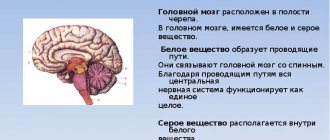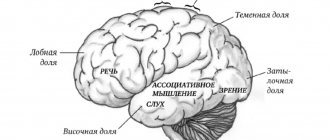The human body is an amazing combination of many organs, tissues, functions, chemical reactions, electrical impulses that allow a person to live, recognize and experience the world around him. Cognition occurs through influences on the human senses - light, sound, taste, smell, tactile and spatial perceptions. All this is the basis of human knowledge and existence in the world around him. And perceptual disorders, whatever they may be and for whatever reasons they occur, are a serious problem.
Perception: reality plus imagination
The fact that a person can perceive the world around him involves the senses and imagination. The knowledge that is obtained through vision, hearing, taste, tactile influence, smell and determining the position of the body in space is processed by special parts of the brain and, with the help of imagination and previously gained experience, become ideas about the world around us. Perception disorders in any area do not allow a person to obtain a holistic picture.
Reasons for violation
The most common causes of agnosia:
- damage to the brain structure, cortex due to hemorrhages, severe skull injuries, tumors,
- lack of blood circulation, which results in chronic ischemia,
- Alzheimer's disease,
- Parkinson's disease.
Depending on the cause and the damaged area of the cerebral cortex, a specific perception disorder :
- time (time intervals, deceleration or acceleration),
- visual (hallucinations, illusions, poor spatial orientation),
- reality (complex hallucinations in which several senses are involved, resulting in an extremely plausible image),
- reality (the feeling of being in a dream).
Far and near
Disorders of sensations and perception of received data are closely interrelated. Receptors that receive information about the surrounding reality transmit nerve impulses to the brain, where analysis and processing of the received information occurs and a response occurs in the form of an idea of an object or phenomenon that affects the receptors. Moreover, some of the receptors should receive such an effect through direct contact with the object, and some through space. So, for example, taste sensations arise when food enters the mouth and tongue. But vision allows you to see objects at a distance. The perception of received information through various senses and receptors is the main mechanism for human cognition of the world. Perceptual disorders are a complex physiological and psychological problem.
Diagnostics
If the patient complains of impaired speech perception, the otolaryngologist determines the level of hearing using audiometry. The simplest method of audiometry is to check the level of speech perception at different distances and at different volume levels. The ability to hear a whisper at a distance of 6 meters is considered the norm. Audiometry using special equipment allows you to assess the level of tonal hearing. With phonemic regression, the levels of tonal and speech types differ sharply - tonal remains normal or decreases slightly.
To diagnose organic lesions of the apparatus, ultrasound is performed; MRI is recommended to study changes in the structure of the brain. When diagnosing central hearing lesions, an EEG is performed using sound stimuli.
Sense organs and receptors
In addition to the six senses known to everyone from school, the human body perceives many more stimuli. So, there are receptors responsible for the perception of heat - cold, pain, as well as sensations of your body. So science identifies not six, but 9 types of sensations:
- vision;
- hearing;
- sense of smell;
- touch;
- equibrioception - sense of balance;
- taste;
- nociception - perception of pain;
- thermoception - feeling of heat;
- proprioception - spatial awareness of your body.
Receiving information about the world around us with the help of various receptors, the brain processes it into perceptions of the surrounding reality.
Perceptions and medical practice
If any disturbances occur in the human body, a big problem may arise - perception disorders. Psychiatry, as a scientific and practical field of medicine, studies these disorders and, as far as possible, helps correct them. Psychiatrists have been studying perception disorders for centuries, helping not only the patients themselves, but also the people around them, to live with such problems. Disturbances in the functioning of one or more sense organs are not always disorders of a complex analysis of the surrounding world. A person who has lost his sight knows what objects and colors really look like and, with the help of the other senses, can imagine a real picture of the world around him. In psychiatry, disorders of the perception process are a whole complex of disorders caused not so much by problems in the functioning of receptors, but by changes in the processes of processing received information and obtaining the final result.
Classification of these errors in psychology
The essence of perception is to analyze information coming from outside and compare it with past experience. If errors occur between the points “external stimulus, memory,” this leads to violations.
The first classification of disorders is observed in local (local) disorders of the brain:
- Elementary and tactile (sensory) disorders. Inability to distinguish colors, shades, as well as loss of the sense of heights, smells, etc. These disorders arise due to damage to the analyzer receptors of the cerebral cortex.
- Complex disorders characterized by loss of the ability to perceive objects and the size of the surrounding space.
Gnostic disorders
Gnostic disorders are classified depending on the disorder of a particular organ. There are three main types:
- Visual agnosia. In turn, among visual agnosias there are: object (difficulties in recognizing objects or their photographs), color and font, optical-spatial (problems with understanding perspective, distance of objects from each other)
- Auditory agnosia. Typical problems in this case are difficulties with understanding and remembering live speech and audio melodies.
In his own speech, a person with obvious auditory agnosia loses intonation; in conversation, his voice becomes monotonous, devoid of emotional coloring. I am also unable to sense the intonation patterns of other interlocutors. - Tactile agnosia. Errors in the perception of objects by touch. For example, a person with his eyes closed cannot recognize his own phone or other object that belongs to him personally. Poor spatial orientation is also observed.
Agnosia is a violation in the recognition of previously seen objects, people, faces, even parts of one’s own body.
How do perceptual disorders manifest themselves?
The field of psychiatry is a special field of medicine that studies various mental disorders and their manifestations. This is a very specific area of human knowledge, which operates with the concepts of “disease”, “health”, “norm” and “pathology” in relation to mental state. One of the areas of work of a psychiatrist is perceptual disorders. Psychiatry considers such problems to be mental pathologies. Disorders of sensation and perception are manifested by several conditions:
- Anesthesia is manifested by an inability to perceive tactile sensations, taste and smell. Its manifestations are similar to medical anesthesia, which is caused to turn off the sensitivity of pain receptors in patients during medical interventions.
- Hyperesthesia is a sensitivity disorder caused by a seeming increase in smell, light, and sound. Very often, hyperesthesia occurs in patients who have suffered a traumatic brain injury.
- Hypoesthesia is the opposite of hyperesthesia, a change in sensitivity. Sensory perception reduces natural stimuli. Patients with depressive disorders suffer from hyposthesia, for whom the world seems dull and boring.
- Paresthesia is expressed in sensations of itching, burning, tingling, and “pins and needles” caused by impaired blood supply and innervation. Often, paresthesia occurs in the Zakharyin-Ged zones: problems of internal organs manifest themselves in the form of unpleasant, painful sensations in certain areas of the surface of the human body.
- Senestopathies are unpleasant sensations that arise inside the human body; they are difficult to describe in words; most often the patient uses vivid comparative images to talk about these sensations.
“Wrong” sensations sometimes coincide with the clinical manifestations of any disease, and not only from psychiatric practice. A competent diagnosis of a disease or condition is the basis of quality treatment.
Major Perceptual Disorders
Psychiatry as a field of clinical medicine operates in terms of methodology, diagnosis, treatment and prevention. To make a diagnosis, it is necessary to clearly know the manifestations of the disease; clinical tests, medical history, laboratory and instrumental studies help with this. The categorical nature of judgments allows one to correctly interpret the data obtained in order to make an adequate diagnosis. In psychiatry, there are two main categories of perceptual disorder to refer to certain mental health problems:
- illusions;
- hallucinations.
Both concepts evoke quite negative feelings in most people, but the patient himself has no control over them, although in many cases such disorders occur due to conditions into which a person has driven himself, for example, drug or alcohol poisoning. Some types of perception disorders can occur in completely healthy people in terms of psychiatry.
Blue Caterpillar from Wonderland
“What you see, but which is not really there” - that’s it, a hallucination. Problems in perceiving reality as it really is are manifested by the emergence of pseudo-real images. Psychiatry, studying perception disorders, defines hallucinations as an image that appears in the mind and is defined as really existing, but without an external stimulus affecting human receptors. These images appear out of nowhere, so to speak, due to a disorder of perception. Psychiatrists divide hallucinations into several types:
- True hallucinations are vivid images that for the patient have certain shapes, colors, smells, and produce specific sounds. True hallucinations are perceived by the patient as a manifestation of reality through his senses, he tries to manipulate them, as if the phenomena or objects he sees exist in reality. In addition, according to a patient experiencing true hallucinations, all people around him should perceive them exactly the same way as he does.
- Pseudohallucinations are perceived by the patient as something unnatural, but really existing; it is devoid of brightness, often incorporeal, and can originate either from the body of the patient himself, or from areas not subject to his receptors. Often, false hallucinations are considered by the patient to be forcibly inserted into his body with the help of special devices, devices, machines, or due to mental influence exerted on him.
In addition to these two types, hallucinations are also divided according to the sense organs by which they can be caused:
- visceral;
- taste;
- visual;
- olfactory;
- auditory;
- tactile.
Each type of hallucination has its own scientific definition and can be divided into several subtypes, which is important for clinical psychiatry.
By the way, hallucinations can be suggested or caused. One of the methods of psychiatry uses the Aschaffenburg symptom, when the patient is allowed to listen to a previously switched off telephone, thus testing his readiness for auditory hallucinations. Or Reichardt's symptom is a symptom of a blank sheet: the patient is given a completely white sheet of paper and asked to talk about what is depicted on it. Hallucinations can also be functional, occurring against the background of stimulation of certain receptors and disappearing after the stimulus is removed. By the way, the image of the Blue Caterpillar smoking a hookah on a mushroom cap from Lewis Carroll’s fairy tale “Alice in Wonderland” is considered by many to be a classic hallucination.
Such a beautiful illusion
In psychiatry, there is another type of perception disorder - illusion. Everyone is familiar with this concept, even those who do not suffer from psychiatric perception disorders. People often use the expression “beautiful illusion, terrible illusion.” So what is it? The scientific definition of one of the types of perception disorder sounds like an incorrect, erroneous perception of objects that exist in reality. Deception of the senses is what illusion is. For example, an illusion can occur when the level of stimulus is insufficient - in the dark it is very easy to mistake the outline of a bush for a human figure. So the emergence of illusions is not always the area of psychiatry. Characteristic signs of illusion are:
- object or phenomenon subject to sensory distortion: figure, voice, tactile or spatial sensation;
- distortion, incorrect perception and evaluation of a real object;
- the illusion is based on sensory perception, that is, a person’s receptors are actually affected, but it is perceived somewhat differently than it actually is;
- the feeling of the false as really existing.
Visual perception disorder is one of the common illusions of healthy people. Moreover, such an error may be of a physical or physiological nature. The physical nature of illusions has nothing to do with psychiatry; the same mirage in the desert has a logical basis, albeit not too simple, but proven by the exact science of physics. Clinical psychiatry considers psychopathological illusions:
- affective, arising against a background of fear or nervous excitability about impending danger;
- verbal, i.e. verbal, illusions - individual words or phrases that are heard by a person;
- pareidolic illusions - visual illusions that arise against the background of a real image by inventing images, for example, a pattern on wallpaper can become an illusion of the frightening content of the picture; Most often, such illusions are observed in creative individuals; for example, scientists have found that Leonardo da Vinci suffered from pareidolia.
The basis of illusions is disorders of perceptions and ideas about the world around us. They are not always pathological in nature. They are often caused by a distortion of perception due to an incorrect assessment of the functioning of the receptors.
Illusions of perception from a psychological point of view
Illusions of perception by psychology are considered as observations of phenomena. And it doesn’t matter if a person understands the practical impossibility of what is happening. Thus, we are able to see mirages, distortions of objects in transparent liquids, etc. In this way, new object images are formed instead of real, real objects. The term illusion is sometimes used to define irritating configurations that cause distorted perception. Psychologists do not consider illusions to be a deviation from the norm. While psychiatrists and psychoanalysts deal with hallucinations and delusions.
Why is illusory perception needed, what functionality do psychologists give it?
People have illusions to remove some uncertainty and resolve certain controversial situations. This process resembles the animation of experiences. Each of us is always trying to find an explanation for our worries. Through illusions they get the opportunity to streamline and organize the vision of an object. Thus, illusions are given a compensatory role. They actually help resolve uncertainty, relax and eliminate anxiety that arises in ambiguous situations. The coloring of the illusory image, figure and background does not matter. In any case, this serves as a kind of warning, a signal to action. But often such a basis leads to erroneous decisions.
Thinking and memory in perceptual disorders
What distinguishes Homo sapiens from all other living beings? Ability to think. Thinking is the main cognitive process that unites the world around a person into a logical picture. Thinking is inextricably linked with perception and memory. All the processes that characterize man as a rational being have changed, developed and transformed over thousands of years. And if at first it was only necessary to apply physical force to satisfy one’s natural needs (food, reproduction and self-preservation), then over time a person learned to build logical chains - to think in order to get the desired result with less physical effort and harm to one’s health and life. To consolidate the favorable result obtained, memory began to develop - short-term, long-term, as well as other mental functions characteristic of people - imagination, the ability to see the future, self-awareness. The symbiosis of perception and thinking disorders is psychosensory disorders. In psychiatry, these disorders are divided into two main types:
- depersonalization can be manifested by both incorrect sensations of one’s body, the so-called mental depersonalization, and distorted concepts of one’s own “I” – mental depersonalization;
- Derealization manifests itself in a distorted perception of the surrounding world - space, time, dimensions, forms of the surrounding reality are perceived by the patient as distorted, although he is absolutely sure of the correctness of his vision.
Thinking is a human characteristic. Reasonable thinking is challenged by perceptual disturbances. Psychiatry, as a field of clinical medicine, is trying to find ways to resolve the disagreements caused by perceptual disturbances in mental patients. With perception disorders, patients also exhibit a thinking disorder - delusions, obsessive or overvalued ideas that become the meaning of such a person’s life.
Psychiatry is a complex science about human mental illnesses, the area of which includes disorders of perception, memory, and thinking, as well as other mental functions. Moreover, any mental health problems are most often associated with a whole range of mental functions - from the functioning of the senses to short-term or long-term memory.
Why is the perception of reality disrupted?
When faced with psychiatric problems, the question arises: what are the causes of perception disorders? There can be a whole range of them: from alcohol and drug poisoning to a pathological state of the human psyche. Mental illnesses are quite difficult to diagnose, often due to the fact that a person cannot accurately describe his feelings, the events that happened or are happening to him, and the initial stages of the disease are not always noticeable to others. Perception disorders can develop as a consequence of any diseases of internal organs or systems, as well as due to disruption of the processes of processing received information, analyzing it and obtaining a specific result. Psychiatric practice at the moment cannot absolutely accurately determine the causes of the development of perception disorders, except for intoxication, when the mechanism of pathology is precisely determined by the toxic substance. Disturbances in the perception of reality can and should cause caution among people around them, since often the patients themselves are in no hurry to turn to specialists, not considering these disturbances as something pathological. A timely identified problem with the perception of surrounding reality can help the patient avoid serious problems. Distorted reality is a huge problem both for the patient and for the people around him, both mentally and physically.
Treatment
For hearing impairment associated with infectious diseases or injuries, appropriate therapy is provided. Antimicrobial, non-steroidal anti-inflammatory (Ibuprofen, Diclofenac) and vasoconstrictor drugs (Naphthyzin, Otrivin) are prescribed. In most cases, surgery is not required for a perforated eardrum.
If the function of the inner ear is impaired due to damage to hair cells or contusion, nootropics (Piracetam, Nootropil, Vipocetin), B vitamins, antihypoxants (Trimetazidine, Meldonium, Actovegin), corticosteroids (Prednisolone, Celeston) are prescribed. Physiotherapy is used - pneumomassage and hyperbaric oxygenation.
Treatment of central hearing disorders associated with organic pathologies of the brain is carried out only in a hospital setting. If drug and surgical treatment are ineffective, rehabilitation therapy is recommended - selection of a hearing aid, and in most cases, after an adaptation period, speech perception in patients is restored.
The reception is conducted by specialists
Kirillov Evgeniy Sergeevich
Audiologist
Cost of services
Initial consultation with an audiologist
1200₽
Repeated consultation with an audiologist
1000₽
Children's fantasies and perceptual disorders
Child psychiatry and psychology is a special type of medicine. Children are great dreamers and inventors, and the increased reactivity of the child’s psyche and insignificant life experience do not give the child the opportunity to independently correct unreal sensations in time. That is why perception disorders in children are a special area of pedagogy, psychology and psychiatry. Visual and auditory illusions are one of the components of every person’s childhood. A scary fairy tale told at night becomes a real nightmare for the baby, hiding under the crib or in the closet. Most often, such disorders occur in the evening, affecting the child’s fatigue and drowsiness. Scary tales and stories, especially those told to a baby at night, can become the basis for the development of a neurotic state. Hallucinations occur in children most often against the background of somatic and infectious diseases as a result of increased body temperature. The age at which such disorders most often manifest is 5-7 years. Hallucinations of this nature are elementary - sparks, flashes of light, outlines or images of people, animals, and from the sounds children hear shouts, knocking, voices of birds or animals. All these visions are perceived by the child as a fairy tale.
Children of different ages can also suffer from manifestations of schizophrenia. In this case, all hallucinations acquire a complex, often ominous character. The plot of hallucinations is complex, often endangering the health or even the life of the baby. Children of older adolescence, which is 12-14 years old, are characterized by the development of taste and tactile hallucinations, the child begins to refuse previously loved foods, and his character and behavior change.
Pediatrics and child psychiatry classifies children with congenital disturbances of perception into a special group. In these cases, the child grows and learns to compensate for the lack of some sensations by enhancing the development of other sensory abilities. A classic example is that a child with congenital hearing loss has excellent vision, notices the smallest details, and pays more attention to minor details of the surrounding reality.
Perception is the basis of knowledge of the surrounding world in all its manifestations. In order to feel, a person is given six sense organs and nine types of receptors. But in addition to sensations, the information received must be transmitted to the appropriate parts of the brain, where it must undergo a process of processing and analysis, drawing up an overall picture of reality based on a complex of sensations and life experiences. The result of perception is a picture of the surrounding reality. Violations in at least one link in the chain of obtaining a picture of the world lead to a distortion of reality. Psychiatry as a field of clinical medicine studies the causes of appearance, stages of development, signs and symptoms, methods of treatment and prevention of perception disorders, both individual phenomena and components of general human health problems.
Main types
Illusions of perception can be of several varieties. The main types include background distortions:
- lack of attentiveness;
- affect;
- pareidolia (the appearance of illusory images when viewing objects);
- optical-geometric distortions.
In addition to optical illusions, other types of illusions may occur:
- sound;
- physiological (for example, after lifting objects of different weights in the right and left hands);
- psychological (related to attitudes);
- verbal (perception of conversations is distorted);
- tactile;
- olfactory;
- taste.
There are also illusions in which the perception of time is disrupted.
Illusions of inattention
This type of distortion occurs when a person is not sufficiently concentrated or lacks information about a subject. The illusion usually appears in conditions that make objective perception difficult - when the room or street is noisy, dark, or the object of attention is at a great distance.
Often, illusions of inattention arise due to the fact that a person has certain expectations and is concentrated on isolating a specific object (sound, image, etc.) from the environment. Thus, a mushroom picker who is determined to have a successful trip to the forest may notice a mushroom under a leaf or branch of a tree. As soon as the mushroom picker switches his attention to other objects, the illusion of inattention arises - he stops seeing the mushrooms.
Representatives of different professions may also experience the illusion of inattention. So, the doctor pays attention to signs of illness noticeable in a person’s appearance and behavior. The photographer evaluates the photogenicity of the client, and the linguist perceives the other person from the point of view of the purity and correctness of his speech.
Psychological attitudes and superstitions are the most common reasons for the appearance of the illusion of inattention in everyday life. So, if a student fails in one subject, then the teacher of this school discipline perceives the student as a failure as a whole.
Illusions of affective nature
A strong emotional shock, reaching the level of affect, can cause illusions of perception. Most often, the emotions that provoke illusions are fear, severe tension, and anxiety.
Under the influence of strong fear, a person who finds himself in the forest at night will see frightening figures in the shadows of bushes and trees; he will perceive the creaking of trees and the rustling of leaves as a threat. Illusions of affect are a normal reaction of a healthy person that arises in a potentially dangerous or alarming situation.
At the age of 4-6 years, children often experience such illusions. They see monsters or other frightening characters in a dark room. For children, the occurrence of such illusions is a normal stage of psychological development associated with the formation of abstract thinking and fantasy.
Mental disorders can also be the cause of affective illusions. Thus, a person with generalized anxiety disorder and a high level of suspicion perceives random glances from passers-by on the street as an attempt at surveillance, and the conversations of other people as a desire to gossip about him.
Pareidolic illusions
Distortions of this type occur when a person examines real objects or images. The appearance of pareidolia cannot be predicted; they occur suddenly.
In most cases, illusory images are fantastic in nature. For example, in a cloud in the sky a person sees figures of animals, outlines of angels, etc.
Often, pareidolic illusions appear against the background of severe alcohol intoxication, after the use of psychoactive drugs.
Pareidolic illusions can be widespread. It happens that a large group of people sees the same images at the same time. This happens when people look at paintings, observe natural phenomena, or look at very famous natural and architectural objects.
One such object that causes mass pareidolia is an image of the Martian region of Cydonia. The photo shows an area with several mesas that form a bizarre landscape. Most people who look at a photograph of Cydonia see a man's face in it.
A similar phenomenon (pareidolia) can be traced in the way people describe clusters of celestial bodies called constellations. Scientists consider the Loch Ness monster, space aliens, ghosts in ancient castles and other paranormal phenomena to be the result of pareidolic illusions of perception.
The exact cause of the pareidolia phenomenon is not known. According to cosmologist Carl Sagan, the ability to recognize images at great distances in poor visibility conditions has been necessary for humans since ancient times. Pareidolia when meeting another person made it possible to understand whether it was one of our own or a stranger, and whether it was worth fearing. In the process of evolutionary development, the recognition mechanism was mastered so well that people learned to notice patterns in objects where they were absent.
The phenomenon of pareidolia is actively used in the creation of advertising products and industrial design. It is believed that objects with outlines similar to a human face or body are better perceived by consumers. The design of the glass bottle for Coca-Cola (Contour Bottle) traces the use of pareidolia in the form of the outlines of a female body.
For consumers to perceive anthropomorphic products well, the outline of a person must be barely visible. If they are too obvious, then the pareidolia product will cause disgust and will seem too intrusive, and sometimes scary.
Robot developers note that the more similar their products are to a living person, the more negative emotions they cause in users. A robot that is as similar to a human as possible is perceived as an anomalous phenomenon or a dead man who has come to life.
Optical-geometric distortions
Illusions of perception can arise due to the anatomical features of the structure and functioning of the eye. The essence of optical-geometric illusions is that the real sizes of objects that a person sees and the perceived ones do not coincide.
The simplest example of an optical-geometric illusion is a picture with drawn lines. They are the same size and have arrows at the ends. The line with the arrow facing inward appears shorter. The one with the end pointing outward appears longer.
The occurrence of optical-geometric illusions is not associated with mental disorders. Distortions are observed by all healthy people, which is why illusions are called physiological.
Causes of illusions of perception
Scientists have not yet provided an explanation for most of the illusions of perception. It is believed that some distortions are related to the integrity of the perception of objects, which is disrupted due to:
- sporadic errors in the functioning of the central nervous system against the background of severe fatigue, stress, lack of sleep, intoxication;
- high sensory load, in which a person is influenced by stimuli simultaneously from several sources. Such irritants may be bright light, high noise levels, high or low air temperature;
- intersensory effect - it occurs when the senses combine and produce a common impression. So, in a good restaurant, a person is influenced by calm, muffled music, the smell and taste of food, and a beautiful interior. Together, all these factors enhance the sensations - food seems even more delicious;
- intersensory interaction - simultaneous coordinated action of the senses, as a result of which a holistic idea of an event or object arises.
The phenomenon of illusion of perception in psychology is also considered as a consequence of mutual stimulation of one sensory system by another. For example, when listening to music, visual images arise.
The cause of illusions can also be psychological and social factors:
- unconscious desires - they become the basis for the formation of a false image of information coming through the senses;
- past experience - a person tends to perceive objects as he is used to seeing, hearing, feeling them;
- emotional state - mood affects how a person perceives the same facts, events, phenomena. Under the influence of heavy emotions, a negative perception of most events and objects is formed.
- personal characteristics, self-esteem, susceptibility or immunity to outside influence - these factors can influence the formation of distortions of perception;
- stereotypes of thinking, stable beliefs - they force a person to consider images, objects and events from a familiar point of view.
In order not to fall into the web of illusions, it is worth considering events and objects from different positions, applying analysis, and, if possible, checking the truth of perception by measurement.










